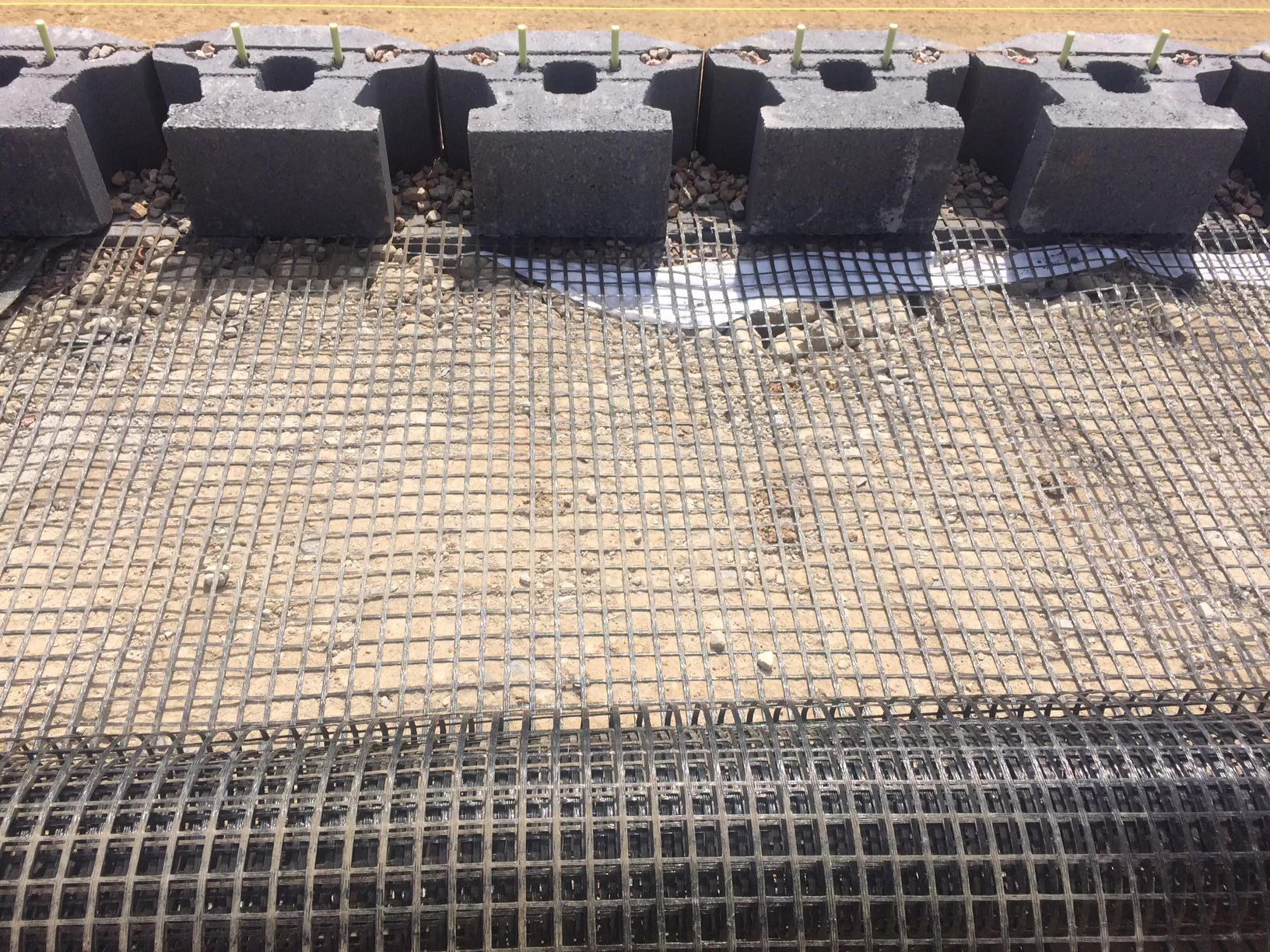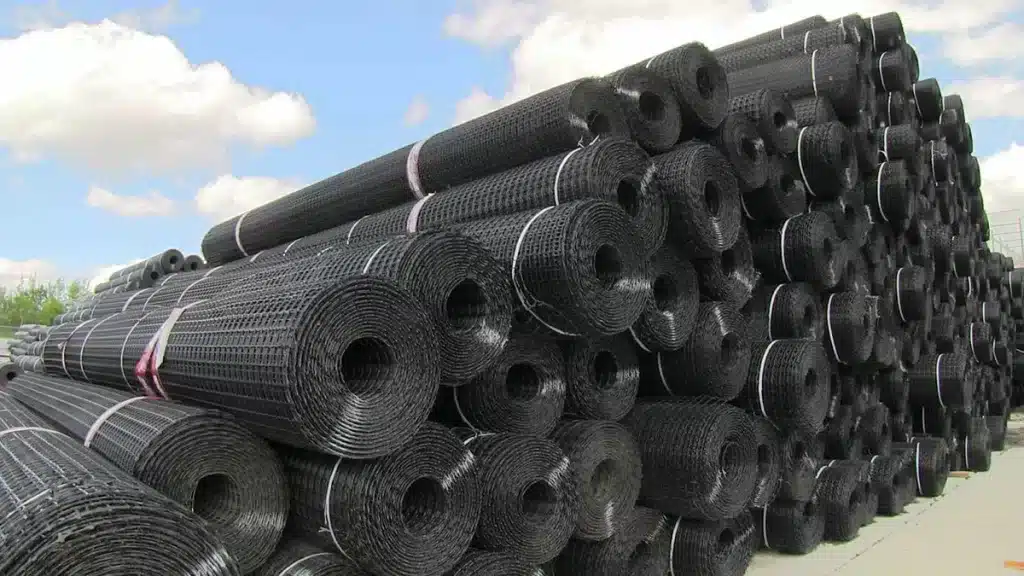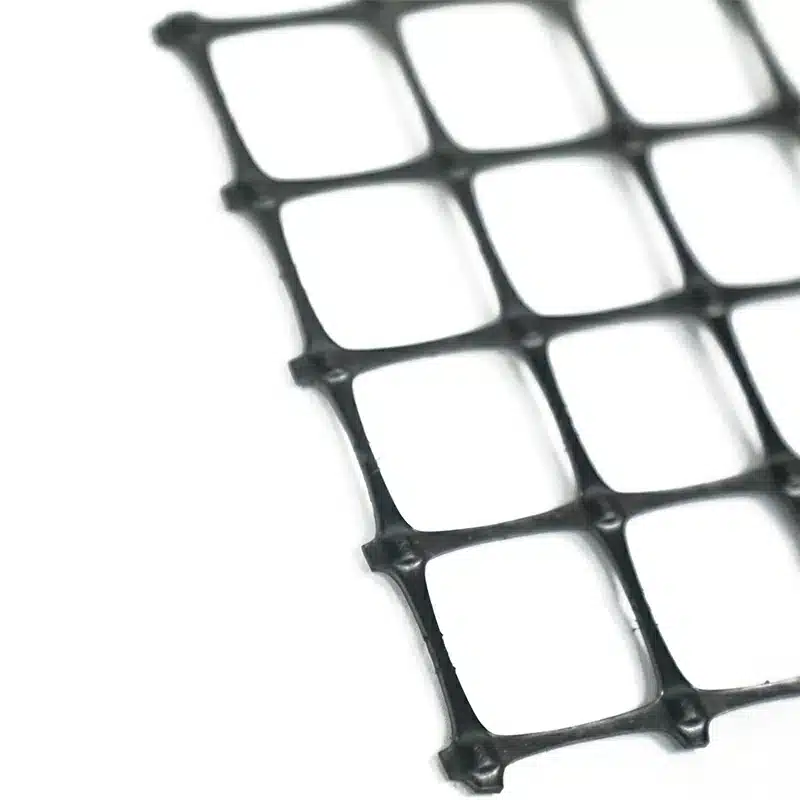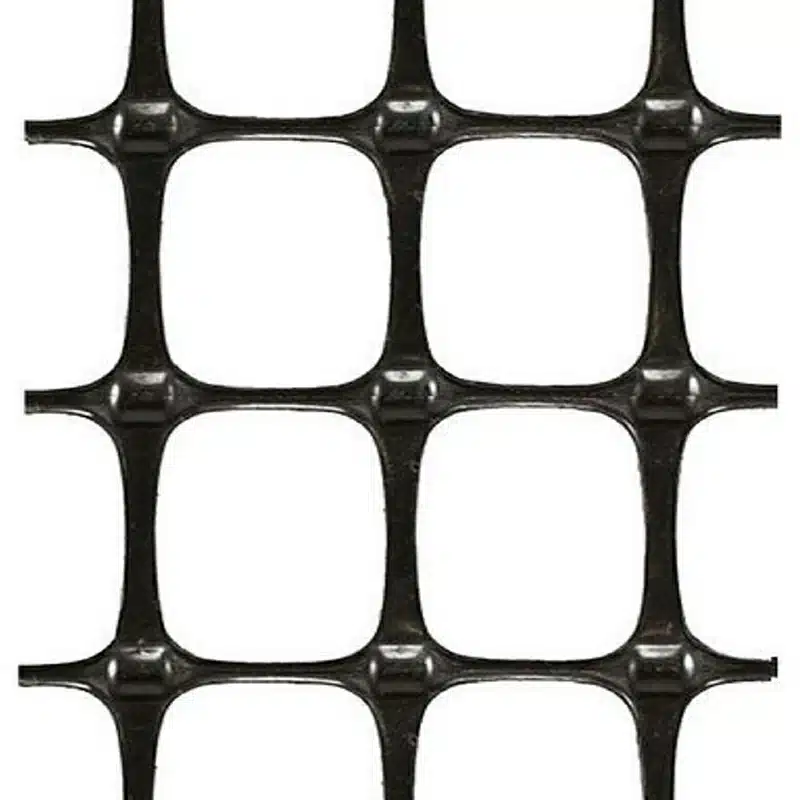+86-159 9860 6917
info@geofantex.com
geofantex@gmail.com
+86-400-8266163-44899
Grading slopes for various construction and landscaping projects demands not only precision but also a focus on stability. One innovative solution to bolster slope stability is the use of geogrids. In this article, we explore the role of geogrids in slope grading and answer crucial questions about their application and benefits.

What is a geogrid for slope stability?
A geogrid for slope stability is a geosynthetic material made from polymers, designed to reinforce soil and stabilize slopes. It’s essentially a grid-like structure that helps in preventing soil movement and erosion by increasing the tensile strength of the soil. Here are some key points about geogrids used for slope stability:
- Reinforcement: Geogrids help distribute loads over a broader area, thereby improving the soil’s ability to support weight, such as from buildings, roads, or natural forces like gravity and water flow.
- Preventing Soil Erosion: By providing a physical barrier and improving cohesion between soil particles, geogrids help prevent the soil from being washed or blown away. This is particularly crucial on steep slopes or in areas prone to heavy rains or winds.
- Versatility: They can be used in various applications, including roadbeds, embankments, retaining walls, and landscaped areas. For slopes, they are installed in layers within the soil or as a surface layer to stabilize the area.
- Material: Typically made from high-density polyethylene (HDPE), polyester, or polypropylene, geogrids are designed to be durable and resistant to biological degradation, chemicals, and UV radiation.
- Installation: The installation of geogrids involves laying them down in layers, usually perpendicular to the direction of potential movement, and covering them with soil. The geogrid’s open grid structure allows for soil interlock, which enhances stability.
By stabilizing slopes, geogrids help reduce the risk of landslides and other slope-related failures, making them a critical component in civil engineering and environmental conservation projects.
What is the effect of geogrid inclusion on slope stability?
Adding a geogrid to slope grading projects significantly enhances stability and reduces erosion risks. Key benefits include:
- Soil reinforcement: Geogrids strengthen the soil, increasing shear resistance and reducing the likelihood of slope failure.
- Erosion control: By stabilizing soil particles, geogrids minimize surface erosion caused by rainfall or runoff.
- Even load distribution: Geogrids help spread loads uniformly across the slope, preventing localized instability.
- Long-term stability: Geogrid reinforcement maintains the slope’s structural integrity over time, extending its lifespan.
Overall, incorporating a geogrid ensures a safer, more durable slope that can better withstand environmental and structural stresses.

How do you install a geogrid on a slope?
Installing a geogrid on a slope is a systematic process:
- Site Evaluation: Assess the slope’s conditions, load requirements, and environmental factors to determine the appropriate geogrid type and specifications.
- Excavation: Prepare the slope by excavating and shaping it to the desired profile, taking care to remove any unstable or loose soil.
- Geogrid Placement: Unroll or place the geogrid material horizontally along the slope’s surface. Overlapping geogrid sheets can provide additional reinforcement.
- Anchoring: Secure the geogrid‘s edges by burying them in a trench or using anchor pins to prevent uplift.
- Backfilling: Place backfill material over the geogrid and compact it in layers to ensure proper compaction and geogrid-soil interaction.
- Vegetation and Erosion Control: Implement erosion control measures, such as vegetation or erosion control mats, to protect the slope from surface erosion.
What are the key considerations when selecting a geogrid for slope grading?
Choosing the right geogrid is critical for ensuring long-term slope stability and effective erosion control. Key considerations include:
- Material Type: Select a geogrid suitable for environmental conditions, soil type, and expected loads. Common materials include HDPE, polypropylene, or polyester.
- Tensile Strength and Stiffness: Ensure the geogrid can withstand the shear forces and lateral pressures of the slope. Steeper or heavily loaded slopes require higher strength.
- Aperture Size and Design: The size and shape of the openings affect soil interlock and erosion control. Smaller apertures improve soil retention on fine soils.
- Durability and UV Resistance: Geogrids exposed to sunlight or harsh chemicals should resist degradation for long-term performance.
- Ease of Installation: Consider handling, anchoring methods, and compatibility with backfill and slope contours to simplify installation and reduce labor costs.
By carefully evaluating these factors, engineers and landscapers can select a geogrid that maximizes stability, minimizes erosion, and ensures the slope’s long-term performance.
Incorporating geogrids into your slope grading project can enhance stability, extend the slope’s longevity, and minimize erosion risks. By following proper installation techniques and choosing the right geogrid for your specific needs, you can achieve a reliable and sustainable graded slope that meets your project’s requirements.



Get Free Sample
We’ll respond as soon as possible(within 12 hours)






















